|
Books Should Be Free Loyal Books Free Public Domain Audiobooks & eBook Downloads |
|
|
Books Should Be Free Loyal Books Free Public Domain Audiobooks & eBook Downloads |
|
Fiction |
|---|
|
Book type:
Sort by:
View by:
|
By: Anna Katharine Green (1864-1935) | |
|---|---|
 Agatha Webb
Agatha Webb
A universally beloved woman has been murdered. But who would have the heart to kill Agatha Webb? Would her husband do it for money matters? Or would it be the cook, who died at about the same time? Or would it be the rich and well-connected Mr. Fredrick, who ran away into the woods? This work is also for feminist fiction lovers. As the story starts right after the murder, we see how Miss Page, a servant at a rich house who is the sweetheart of the same Mr. Fredrick, wants to join the investigation- and is constantly prevented from doing so by conservative men. | |
 Chief Legatee
Chief Legatee
"I was married to-day in Grace Church. At the altar my bride--you probably know her name, Miss Georgian Hazen--wore a natural look, and was in all respects, so far as any one could see, a happy woman, satisfied with her choice and pleased with the éclat and elegancies of the occasion. Half-way down the aisle this all changed. I remember the instant perfectly. Her hand was on my arm and I felt it suddenly stiffen. I was not alarmed, but I gave her a quick look and saw that something had happened... | |
 Staircase at the Heart's Delight
Staircase at the Heart's Delight
Detective Ebenezer Gryce tells the story of the case with which he begun his career in 1840. Several wealthy men were drowned and washed ashore in New York City, and the first clue leads to a dubious money lender... | |
By: Eleanor Hallowell Abbott (1872-1958) | |
|---|---|
 The Indiscreet Letter
The Indiscreet Letter
Three fellow travelers on a train enter into a discussion concerning what they would call an ‘indiscreet letter.’ The discussion albeit short, produces some rather interesting revelations during the journey and at journey’s end. | |
 Peace On Earth, Good-Will To Dogs
Peace On Earth, Good-Will To Dogs
“If you don’t like Christmas stories, don’t read this one!And if you don’t like dogs I don’t know just what to advise you to do!For I warn you perfectly frankly that I am distinctly pro-dog and distinctly pro-Christmas, and would like to bring to this little story whatever whiff of fir-balsam I can cajole from the make-believe forest in my typewriter, and every glitter of tinsel, smudge of toy candle, crackle of wrapping paper, that my particular brand of brain and ink can conjure up on... | |
 The White Linen Nurse
The White Linen Nurse
Throughout three years of school, Rae Malgregor had been perfectly pliant, perfectly compliant to all the demands placed on her. But now, on the eve of graduation, she couldn’t go on with the mask of artificiality and the air of perfection. She had been chasing this nursing job three whole years, but there was just no wag to it! The Superintendent was stunned. Her best student! The Senior Surgeon was all grey granite business and livid that his time was being taken up with a hysterical nurse! And yet, though he wouldn’t have admitted it to anyone, especially himself, his interest was piqued. | |
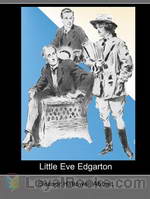 Little Eve Edgarton
Little Eve Edgarton
Eve Edgarton is not who she seems she is. A short encounter with Mr. Barton show that first impressions are not always right or indicative of one’s seemingly obvious preference or one’s proclivity. | |
By: Virginia Woolf (1882-1941) | |
|---|---|
 The Voyage Out
The Voyage Out
The Voyage Out is the first novel by Virginia Woolf, published in 1915 by Duckworth; and published in the U.S. in 1920 by Doran. One of Woolf's wittiest social satires.Rachel Vinrace embarks for South America on her father's ship and is launched on a course of self-discovery in a kind of modern mythical voyage. The mismatched jumble of passengers provide Woolf with an opportunity to satirize Edwardian life. The novel introduces Clarissa Dalloway, the central character of Woolf's later novel, Mrs... | |
 Jacob's Room
Jacob's Room
The novel centers, in a very ambiguous way, around the life story of the protagonist Jacob Flanders, and is presented entirely by the impressions other characters have of Jacob [except for those times when we do indeed get Jacob's perspective]. Thus, although it could be said that the book is primarily a character study and has little in the way of plot or background, the narrative is constructed as a void in place of the central character, if indeed the novel can be said to have a 'protagonist' in conventional terms. Motifs of emptiness and absence haunt the novel and establish its elegiac feel. | |
 Monday or Tuesday
Monday or Tuesday
Adeline Virginia Woolf was an English author, essayist, publisher, and writer of short stories, regarded as one of the foremost modernist literary figures of the twentieth century. During the interwar period, Woolf was a significant figure in London literary society and a member of the Bloomsbury Group. Her most famous works include the novels Mrs. Dalloway (1925), To the Lighthouse (1927), and Orlando (1928), and the book-length essay A Room of One's Own (1929), with its famous dictum, "A woman must have money and a room of her own if she is to write fiction... | |
By: E. T. A. Hoffmann (1776-1822) | |
|---|---|
 Master Flea
Master Flea
Ernst Theodor Wilhelm Hoffmann (1776 – 1822), better known by his pen name E.T.A. Hoffmann (Ernst Theodor Amadeus Hoffmann), was a German Romantic author of fantasy and horror, a jurist, composer, music critic, draftsman and caricaturist. Hoffmann's stories were very influential during the 19th century, and he is one of the major authors of the Romantic movement.He is the subject and hero of Jacques Offenbach's famous but fictional opera The Tales of Hoffmann, and the author of the novelette The Nutcracker and the Mouse King, on which the famous ballet The Nutcracker is based... | |
By: John Muir | |
|---|---|
 Steep Trails
Steep Trails
A collection of Muir's previously unpublished essays, released shortly after his death. "This volume will meet, in every way, the high expectations of Muir's readers. The recital of his experiences during a stormy night on the summit of Mount Shasta will take rank among the most thrilling of his records of adventure. His observations on the dead towns of Nevada, and on the Indians gathering their harvest of pine nuts, recall a phase of Western life that has left few traces in American literature... | |
 Stickeen
Stickeen
A great dog story, a well told tale — the naturalist and adventurer John Muir recounts how he and his companion, a dog named Stickeen, each, alone, confronted and conquered their fears of an icy Alaskan glacier in 1880. | |
By: John Galsworthy (1867-1933) | |
|---|---|
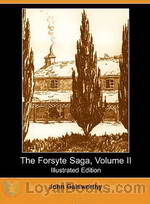 In Chancery (Vol. 2 of The Forsyte Saga)
In Chancery (Vol. 2 of The Forsyte Saga)
‘The Forsyte Saga’ is the story of a wealthy London family stretching from the eighteen-eighties until the nineteen-twenties. In Chancery is the second book in the saga. Five years have passed since Irene left Soames and the death of Bosinney. Old Jolyon meets Irene and is enchanted by her. At his death he leaves her a legacy sufficient for her to live an independent life in Paris. Soames, who is desperate for a son, attempts to effect a rapprochement but is rejected by her. Meanwhile Young Jolyon, now a widower who is Irene’s trustee, falls in love with her... | |
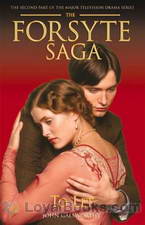 To Let (Vol. 3 of The Forsyte Saga)
To Let (Vol. 3 of The Forsyte Saga)
‘The Forsyte Saga’ is the story of a wealthy London family stretching from the eighteen-eighties until the nineteen-twenties. To Let is the third and final book in the saga (although Galsworthy later published two further trilogies which extend the story). We are now in 1920, about twenty years since Irene married Young Jolyon and gave birth to John and since Soames married Annette, who gave him a daughter, Fleur. The two sides of the family have not met since those times and John and Fleur do not even know of each other’s existence... | |
 Five Tales
Five Tales
This 1918 book consists of five short stories or novelettes by Galsworthy. They are The First and Last (1914), A Stoic, The Apple Tree (1916), The Juryman, Indian Summer of a Forsyte (1918) This last became part of the trilogy The Forsyte Saga. (Introduction by David Wales) | |
 Beyond
Beyond
Gyp, the daughter of ex-Major Charles Claire Winton, at the age of 23 marries Fiorsen, a Swedish violin virtuoso. Her mother, the wife of another man, has been Winton's mistress; she had died when Gyp was born. A highly sensitive child, Gyp has grown up in isolated surroundings with a kind, but very British, father. As she gets older her father tries to introduce her into society. An attack of gout takes him to Wiesbaden for a cure and, as he never goes anywhere without her, she accompanies him... | |
 Skin Game
Skin Game
A small play in three acts. A kind of comic tragedy. The plot tells the story of the interaction between two very different families in rural England just after the end of the First World War. Squire Hillcrist lives in the manor house where his family has lived for generations. He has a daughter, Jill, who is in her late teens; and a wife, Amy, as well as servants and retainers. He is "old money", although his finances are at a bit of low ebb. The other family is the "nouveau riche" Hornblowers,... | |
By: Kurt Vonnegut (1922-2007) | |
|---|---|
 2 B R 0 2 B
2 B R 0 2 B
In this chilling short-story by a master of the craft, Kurt Vonnegut creates a fictional world of the future where life and death are no longer matters of individual choice or destiny. The title refers to the famous quote from Hamlet, “To be or not to be....” with “0” being pronounced as “naught.” It also refers to the eternal dilemma of life and death that face every human being at some point in their lives. Written in 1962 it is set in some unspecified time in the future, when earth has become a Utopia... | |
By: Gustave Flaubert (1821-1880) | |
|---|---|
 Three Short Works
Three Short Works
Here is a collection of strikingly different pieces by Flaubert: a prose poem in the voices of Death, Satan and Nero; the trials and apotheosis of a medieval saint; and the life of a selfless maid in 19th century France. Each exhibits the vigorous exactness, and the mixture of realism and romanticism, for which Flaubert is renowned. | |
 Salammbô
Salammbô
After completing the famous Mme Bovary, Flaubert put all his efforts into researching the Punic Wars and completed the lesser known Salammbô. In this volume, Flaubert describes in detail the Mercenary Revolt and the fight of the Mercenaries against the all-powerful Carthage, the theft of the magical Zaimph and the love and hate between the Carthaginian princess Salammbô and the fiercest leader of the Mercenaries, Matho. | |
By: Honoré de Balzac (1799-1850) | |
|---|---|
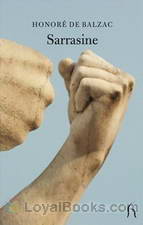 Sarrasine
Sarrasine
Published by Honoré de Balzac in the tempestuous year of 1830, the tale follows the undulating pathways of Sarrasine the sculptor’s shocking journey to his coming of age. As one of the “fathers of realism” Balzac painted with his words a vivid portrait of life in the swirling salons of Europe at the end of the Bourbon monarchy, and we follow Sarrasine from France to Italy in search of both his métier and his muse.However it is also the story of La Zambinella, an Italian singer with whom Sarrasine falls madly and passionately in love. But that passion holds a secret which Sarrasine spies too late. | |
 The Girl with the Golden Eyes
The Girl with the Golden Eyes
"Give me a feast such as men give when they love," she said, "and whilst I sleep, slay me..."Listeners who like to plunge straight into a story would do well to skip the lengthy preamble. Here, Balzac the virtuoso satirist depicts the levels of Parisian society as a version of the Inferno of Dante - but perhaps keeps the reader waiting too long for the first act of his operatic extravaganza.Our beautiful, androgynous hero, Henri de Marsay, is one of the bastard offspring of a depraved Regency milord and himself practises the cynical arts of the libertine... | |
 Farewell
Farewell
In his startling and tragic novella Farewell (‘Adieu’), Balzac adds to the 19th century’s literature of the hysterical woman: sequestered, confined in her madness; mute, or eerily chanting in her moated grange. The first Mrs Rochester lurks in the wings; the Lady of Shalott waits for the shadowy reflection of the world outside to shatter her illusion. Freud’s earliest patients will soon enter the waiting-room in their turn. Whilst out hunting two friends come across a strange waif-like woman shut up in a decaying chateau which one of them dubs “the Palace of the Sleeping Beauty”... | |
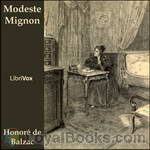 Modeste Mignon
Modeste Mignon
Modeste Mignon, a young provincial woman of romantic temperament, imagines herself to be in love with the famous Parisian poet Melchior de Canalis. However, he is not moved by her attentions. He invites his secretary Ernest de la Brière to "deal with the matter". Ernest answers Modeste's letters in his name and acts as her lover, disguised as Canalis. The scene changes dramatically when Ernest discoveres that Modest is, in fact, a rich heiress. Would he be able to win her heart despite his lie? | |
 Louis Lambert
Louis Lambert
Louis Lambert is an 1832 novel by French novelist and playwright Honoré de Balzac (1799–1850), included in the Études philosophiques section of his novel sequence La Comédie humaine. Set mostly in a school at Vendôme, it examines the life and theories of a boy genius fascinated by the Swedish philosopher Emanuel Swedenborg (1688–1772). Balzac wrote Louis Lambert during the summer of 1832 while he was staying with friends at the Château de Saché, and published three editions with three different titles... | |
By: William Makepeace Thackeray (1811-1863) | |
|---|---|
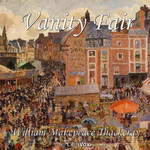 Vanity Fair
Vanity Fair
If you've enjoyed watching the 1998 BBC television miniseries, you'd probably want to renew your acquaintance with William Makepeace Thackeray's 1847 novel, Vanity Fair. However, if you're unfamiliar with what has been dubbed one of the Best 100 Books in English Literature, you certainly have a treat ahead. Miss Pinkerton's Academy in Chiswick Mall in London is where young ladies with ambitions of making a good marriage are sent by their socially aspiring middleclass parents. Two young ladies, Amelia Sedley and Rebecca (Becky) Sharpe are on their way home after completing their term at Miss Pinkerton's... | |
 The History of Henry Esmond, Esq., A Colonel in the Service of Her Majesty Queen Anne
The History of Henry Esmond, Esq., A Colonel in the Service of Her Majesty Queen Anne
A classic Victorian novel and a historical novel rolled into one! Read about court and army life during the reign of Queen Anne – a story of Catholic – Protestant intrigue, and the party which aspired to the restoration of Bonny Prince Charlie. And, a good love story as well. | |
 Rose And The Ring
Rose And The Ring
Victorian social satire hiding in a set of children's fairy tales by the author of the classic "Vanity Fair" | |
 Virginians
Virginians
It tells the story of Henry Esmond's twin grandsons, George and Henry Warrington. Henry's romantic entanglements with an older woman lead up to his taking a commission in the British army and fighting under the command of General Wolfe at the capture of Quebec. On the outbreak of the American War of Independence he takes the revolutionary side. George, who is also a British officer, thereupon resigns his commission rather than take up arms against his brother. | |
By: Ambrose Bierce (1842-1914?) | |
|---|---|
 Present at a Hanging and Other Ghost Stories
Present at a Hanging and Other Ghost Stories
Ambrose Bierce (1842 – 1914?), satirist, critic, poet, short story writer and journalist. His fiction showed a clean economical style often sprinkled with subtle cynical comments on human behaviour. Nothing is known of his death, as he went missing while an observer with Pancho Villa’s army in 1913/14. (Summaries by Peter Yearsley)The Ways of Ghosts: Stories of encounters with the ghosts of the dead and dying. The spirits of the dead reach out to the living, to pass on a message or to pursue a killer... | |
 The Parenticide Club
The Parenticide Club
Ambrose Bierce (1842 – 1914?), best known as journalist, satirist and short story writer. Cynical in outlook, economical in style; Bierce vanished while an observer with Pancho Villa’s army. Four grotesque short stories about murder within the family, seen through the gently innocent eyes of family members … usually the murderer himself.My favorite murder (00:23)Oil of Dog (20:13)An Imperfect Conflagration (29:32)The Hypnotist (37:14) | |
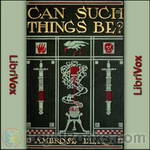 Can Such Things Be?
Can Such Things Be?
24 short stories in fairly typical Bierce fashion - ghostly, spooky, to be read (or listened to) in the dark, perhaps with a light crackling fire burning dimly in the background. Stories of ghosts, apparitions, and strange, inexplicable occurrences are prevalent in these tales, some of which occur on or near Civil War fields of battle, some in country cottages, and some within urban areas. Can Such Things Be? implies and relates that anything is possible, at any time. | |
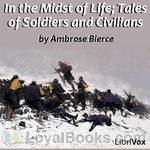 In the Midst of Life; Tales of Soldiers and Civilians
In the Midst of Life; Tales of Soldiers and Civilians
These stories detail the lives of soldiers and civilians during the American Civil War. This is the 1909 edition. The 1909 edition omits six stories from the original 1891 edition; these six stories are added to this recording (from an undated English edition). The 1891 edition is entitled In The Midst Of Life; Tales Of Soldiers And Civilians. The Wikipedia entry for the book uses the title Tales of Soldiers and Civilians. Ambrose Gwinnett Bierce (June 24, 1842 – after December 26, 1913) was an American editorialist, journalist, short story writer, fabulist and satirist... | |
By: Joel Chandler Harris (1848-1908) | |
|---|---|
 Uncle Remus
Uncle Remus
Bearing a striking resemblance to Aesop of Aesop's Fables fame, American author Joel Chandler Harris' Uncle Remus is also a former slave who loves to tell simple and pithy stories. Uncle Remus or to give it its original title, Uncle Remus: His Songs and His Sayings was published in late 1880 and received instant acclaim. The book was reviewed in hundreds of journals and newspapers across the country, leading to its immense success, both critical and financial. “Remus” was originally a fictional character in a newspaper column... | |
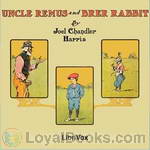 Uncle Remus and Brer Rabbit
Uncle Remus and Brer Rabbit
Uncle Remus' stories feature a trickster hero called Br'er Rabbit ("Brother" Rabbit), who uses his wits to slide out of trouble and gain the advantage over the slower witted other animals, many of whom are trying to eat him. Br'er Rabbit stories were mostly collected directly from the afro-american oral story-telling tradition and are said to be a direct interpretation of Yoruba tales of Hare. This book contains 11 unique stories and was the last one published before the author's death. (Introduction by Phil Chenevert) | |
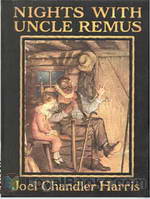 Nights With Uncle Remus
Nights With Uncle Remus
That the little boy loved Uncle Remus and his stories was so obvious that the tale-spinning sessions began drawing additional listeners. Daddy Jack, an old "Africa man" visiting from down-state; Sis Tempy, the strong chief of the mansion's servants; and Tildy, a young and pretty servant-girl - all found their way to Uncle Remus' rude cabin when their duties or interests permitted, to sit around the hearth and hear the wonderful tales of the animals, and foremost among them, Brer Rabbit and Brer Fox... | |
By: Murray Leinster (1896-1975) | |
|---|---|
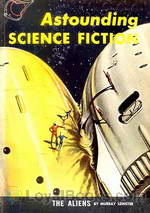 The Aliens
The Aliens
This story starts with space ships scouring the universe in an interplanetary game of tag. The humans know there are “Aliens” out there. But so do the Aliens. As each tries desperately to make the phenomenal discovery, they secretly hope that the other will not turn out to be the enemy. Humans call them “Plumies” because of the feathery plumes they inscribe on silicon-bronze tablets and cairns they have left behind on their intergalactic travels over the last thousand years. The search goes on, till one day somewhere in outer space, a Plumie ship collides with the one manned by humans... | |
 Operation Terror
Operation Terror
An unidentified space ship lands in a Colorado lake. Equipped with a paralyzing ray weapon, the creatures begin taking human prisoners. A loan land surveyor and a journalist are trapped inside the Army cordon, which is helpless against the mysterious enemy. Can they stop the aliens before it is too late? | |
 Space Tug
Space Tug
Joe Kenmore heard the airlock close with a sickening wheeze and then a clank. In desperation he turned toward Haney. “My God, we’ve been locked out!” Through the transparent domes of their space helmets, Joe could see a look of horror and disbelief pass across Haney’s face. But it was true! Joe and his crew were locked out of the Space Platform. Four thousand miles below circled the Earth. Under Joe’s feet rested the solid steel hull of his home in outer space. But without tools there was no hope of getting back inside. Joe looked at his oxygen meter. It registered thirty minutes to live. | |
 The Pirates of Ersatz
The Pirates of Ersatz
Bron is the offspring of infamous space pirates but instead of following in the family footsteps he decides to become an electronic engineer. Unfortunately, every time he tries to get out, something pulls him back in. This is a tongue-in-cheek space adventure along the lines of the Stainless Steel Rat by Harry Harrison. It was originally published in the FEB-APR issues of Astounding Science Fiction in 1959. | |
 The Mad Planet
The Mad Planet
It is 30,000 years following dramatically changed climate conditions on earth which had let massive amounts of carbon dioxide belch from the interior of the planet into the atmosphere. Over the millenia this would have quite devastating effects on life as it had once been known. Much of the human and animal population would not survive the climate change, and indeed those few humans who did survive knew nothing of all which their predecessors had learned and built. Indeed, they knew not even of their existence... | |
 This World Is Taboo
This World Is Taboo
Calhoun is an Interstellar Medical Serviceman, and he's needed on Dara. Trouble is: Dara is forbidden. Taboo. And breaking quarantine will make Calhoun a presumed plague-carrier and subject to being shot on sight by anyone from Weald. But hey! If he did the smart thing, we wouldn't have a story!But why are men from Dara shooting at him? | |
 Talents, Incorporated
Talents, Incorporated
Bors felt as if he'd been hit over the head. This was ridiculous! He'd planned and carried out the destruction of that warship because the information of its existence and location was verified by a magnetometer.But, if he'd known how the information had been obtained--if he'd known it had been guessed at by a discharged spaceport employee, and a paranoid personality, and a man who used a hazel twig or something similar--if he'd known that, he'd never have dreamed of accepting it. He'd have dismissed it flatly! | |
 The Hate Disease
The Hate Disease
Dr. Calhoun and his pet tormal Murgatroyd work for the Interstellar Medical Service making routine public health inspections on far-flung colonial planets. When they reach Tallien Three they are greeted with a rocket attack by the Paras, a mutated form of human rapidly replacing the “normals”. The normals think it’s a pandemic of demonic possession but Calhoun has his doubts. If he can keep from turning into a Para, or being assassinated by them he just might figure this thing out. – The Hate Disease was first published in the August 1963 edition of Analog Science Fact and Fiction magazine. | |
 The Runaway Skyscraper
The Runaway Skyscraper
Arthur Chamberlain has problems. His one-man engineering firm is faltering and his pretty secretary Estelle barely notices him. But these problems are put aside when his Manhattan office building falls into the fourth dimension. Madison Square is filled with wigwams and it’s up to Arthur to engineer a way to make his building to fall back to the future. – The Runaway Skyscraper first appeared in the February 22, 1919 issue of Argosy magazine. | |
 Operation: Outer Space
Operation: Outer Space
Jed Cochrane is about to take off on man's first interstellar voyage. His mission: Make sure it's good television! (Introduction by Mark Nelson) | |
 The Machine that Saved the World
The Machine that Saved the World
They were broadcasts from nowhere--sinister emanations flooding in from space--smashing any receiver that picked them up. What defense could Earth devise against science such as this? In the far future of 1972, on a secret military installation, Staff Sergeant Bellews is an expert on the latest scientific discovery: a way for ordinary machines like vacuums and lawnmowers to gather experience in their jobs, becoming error free over time. Then the strange broadcasts began to blow up transmitters everywhere. Were they from space? Enemies? the future? He didn't care until they started messin' with his machines. Then he took it personally. (summary from the first chapter and Phil Chenevert) | |
By: Edith Nesbit (1858-1924) | |
|---|---|
 The Phoenix and the Carpet
The Phoenix and the Carpet
The Phoenix and the Carpet is a fantasy novel for children, written in 1904 by E. Nesbit. It is the second in a trilogy of novels that began with Five Children and It (1902), and follows the adventures of the same five protagonists – Cyril, Anthea, Robert, Jane and the Lamb. Their mother buys the children a new carpet to replace the one from the nursery that was destroyed in an unfortunate fire accident. Through a series of exciting events, the children find an egg in the carpet which cracks into a talking Phoenix. The Phoenix explains that the carpet is a magical one that will grant them three wishes per day. | |
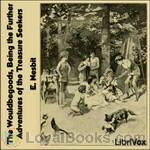 The Wouldbegoods, Being the Further Adventures of the Treasure Seekers
The Wouldbegoods, Being the Further Adventures of the Treasure Seekers
The Bastable children, first met in The Treasure Seekers, are sent to stay in the countryside; is it large enough to contain their exuberant activities? They (and Pincher the dog) have every intention of being good… | |
 New Treasure Seekers
New Treasure Seekers
Oswald, Dora, Dicky, Alice, H.O, and Noel fill their free time with entertainments that don’t always turn out as they plan. But whether telling fortunes at a fete, unwittingly assisting an elopement, reforming their nasty cousin Archibald or even getting arrested, it is all good fun, and usually in a good cause. | |
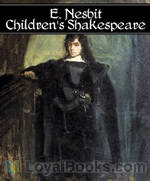 The Children's Shakespeare
The Children's Shakespeare
This children's book retells twelve of Shakespeare's most popular plays as stories for children. Each of the plays are rewritten as short stories or fairy tales suitable to keep the attention of child readers or listeners. The introduction of the book cites a child's ability and desire to become familiar with the works of Shakespeare as a stepping-stone toward a greater appreciation of the actual plays later in life. | |
 The House of Arden
The House of Arden
This novel describes how Edred and Elfrida Arden and their Aunt Edith embark on a treasure hunt through time - for the famous Arden family treasure. With help from the magical creature Mouldiwarp, they find a whole lot of excitement and adventure. They need to discover the missing fortune before Edred's tenth birthday - or it will never be theirs. | |
 Harding's Luck
Harding's Luck
Harding's luck is sequel to E. Nesbit's "The House of Arden". It tells the story of Dickie Harding, a disabled boy, who one day accidentelly discovers an old magic, that allows him to travel into his own past. There he meets Elfrida and Edred Arden (as told in "The House of Arden") and together they seek for a long lost treasure. | |
By: Margaret Penrose (1873-1954) | |
|---|---|
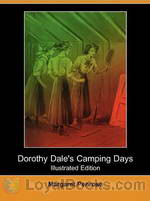 Dorothy Dale's Camping Days
Dorothy Dale's Camping Days
So the parties separated and then Dorothy was free to leave her hiding place. She longed to tell her friends the strange story, but she knew that the finding of Tavia was the one and only thing to be thought of just then. “Are you sure that this is the direction in which the boys went?” asked Nat, with something like a sigh. Dorothy looked over the rough woodland. “No,” she said, “there was a swamp, for I distinctly remember that they picked their way through tall grass, and about here the grass is actually dried up.” (Extract from Chapter 26) | |
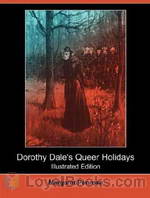 Dorothy Dale's Queer Holidays
Dorothy Dale's Queer Holidays
Relates the details of a mystery that surrounded Tanglewood Park. There is a great snowstorm, and the young folks become snowbound, much to their dismay. | |
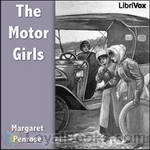 The Motor Girls
The Motor Girls
When Cora Kimball got her new auto for her birthday she had no idea what adventures would start for her and brother Jack.Where did Ed’s money and bonds disappear? Were they misplaced or were they stolen and lost forever.Did the conceited Sid Wilcox have something to do with the missing money, with the help of Ida Giles? And what did the obnoxious Lem Gildy have to do with it all?Join Cora and her friends in this mystery and adventure of The Motor Girls. | |
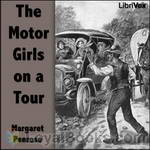 The Motor Girls on a Tour
The Motor Girls on a Tour
This is the second book in the series of the Motor Girls. Join Cora and her friends in this mystery and adventure of The Motor Girls. Also the search for a missing table and promise book belonging to a cripple girl called Wren. Why is Clip so mysterious? What is she up to? Is Sid Wilcox up to his old tricks with his chum Rob Roland? | |
By: Willa Cather (1873-1947) | |
|---|---|
 One of Ours
One of Ours
This 1923 Pulitzer Prize winning novel was written by Willa Cather. This work had been inspired by reading her cousin G.P. Cather’s wartime letters home to his mother. He was the first officer from Nebraska killed in World War I. Claude Wheeler, the subject of the novel, is a young man growing up on a Nebraska farm. The son of well to do parents, Claude is troubled by his apparent inability to find purpose with his life. Everything he does seems to turn out wrong, at least in his own mind. Although he is a skilled farmer, Claude believes his destiny lies elsewhere... | |
By: Horatio Alger, Jr. (1832-1899) | |
|---|---|
 Fame and Fortune
Fame and Fortune
Richard Hunter, in this sequel to Ragged Dick, continues his way in the world through hard work and excellent morals. He, along with his friend Henry, continue their positive outlook as they try to advance their lives. But Dick soon finds envy and jealousy leads others to work against him. How will Dick react as he tries to strive forward while others conspire to hold him down? (Written by Barry Eads) | |